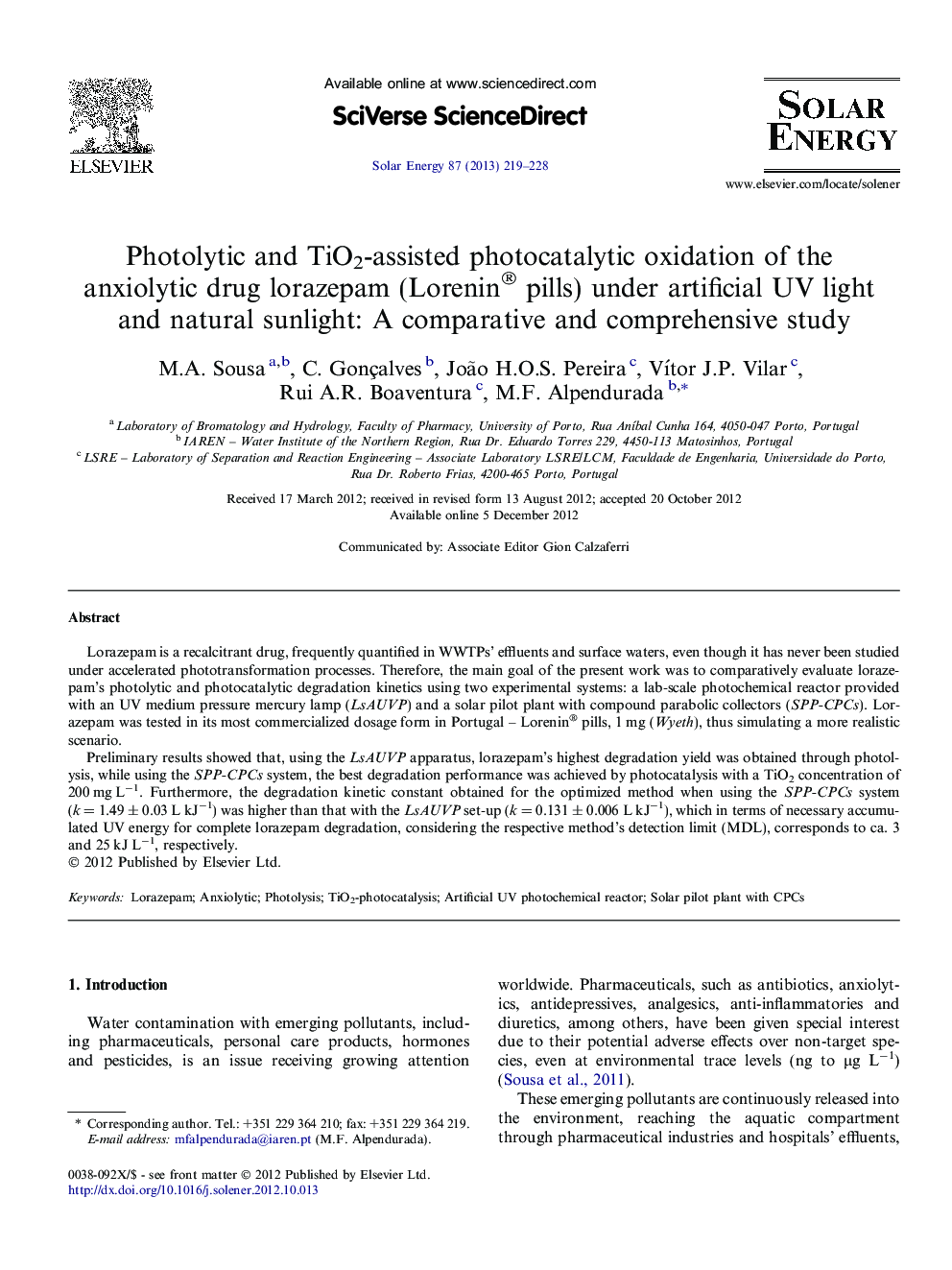| Article ID | Journal | Published Year | Pages | File Type |
|---|---|---|---|---|
| 1550691 | Solar Energy | 2013 | 10 Pages |
Lorazepam is a recalcitrant drug, frequently quantified in WWTPs’ effluents and surface waters, even though it has never been studied under accelerated phototransformation processes. Therefore, the main goal of the present work was to comparatively evaluate lorazepam’s photolytic and photocatalytic degradation kinetics using two experimental systems: a lab-scale photochemical reactor provided with an UV medium pressure mercury lamp (LsAUVP) and a solar pilot plant with compound parabolic collectors (SPP-CPCs). Lorazepam was tested in its most commercialized dosage form in Portugal – Lorenin® pills, 1 mg (Wyeth), thus simulating a more realistic scenario.Preliminary results showed that, using the LsAUVP apparatus, lorazepam’s highest degradation yield was obtained through photolysis, while using the SPP-CPCs system, the best degradation performance was achieved by photocatalysis with a TiO2 concentration of 200 mg L−1. Furthermore, the degradation kinetic constant obtained for the optimized method when using the SPP-CPCs system (k = 1.49 ± 0.03 L kJ−1) was higher than that with the LsAUVP set-up (k = 0.131 ± 0.006 L kJ−1), which in terms of necessary accumulated UV energy for complete lorazepam degradation, considering the respective method’s detection limit (MDL), corresponds to ca. 3 and 25 kJ L−1, respectively.
► First study of the recalcitrant drug lorazepam under accelerated phototreatment. ► Photo(cata)lytic experiments with lorazepam pills Lorenin®, resembling real scenario. ► Comparative study using lab-scale photoreactor with UV lamp vs CPC solar pilot plant. ► Lorazepam photolysis after 25 kJUV L−1 using the lab-scale photoreactor. ► Higher photocatalytic yield (3 kJUV L−1) with 200 mg L−1 TiO2 using CPC solar plant.
